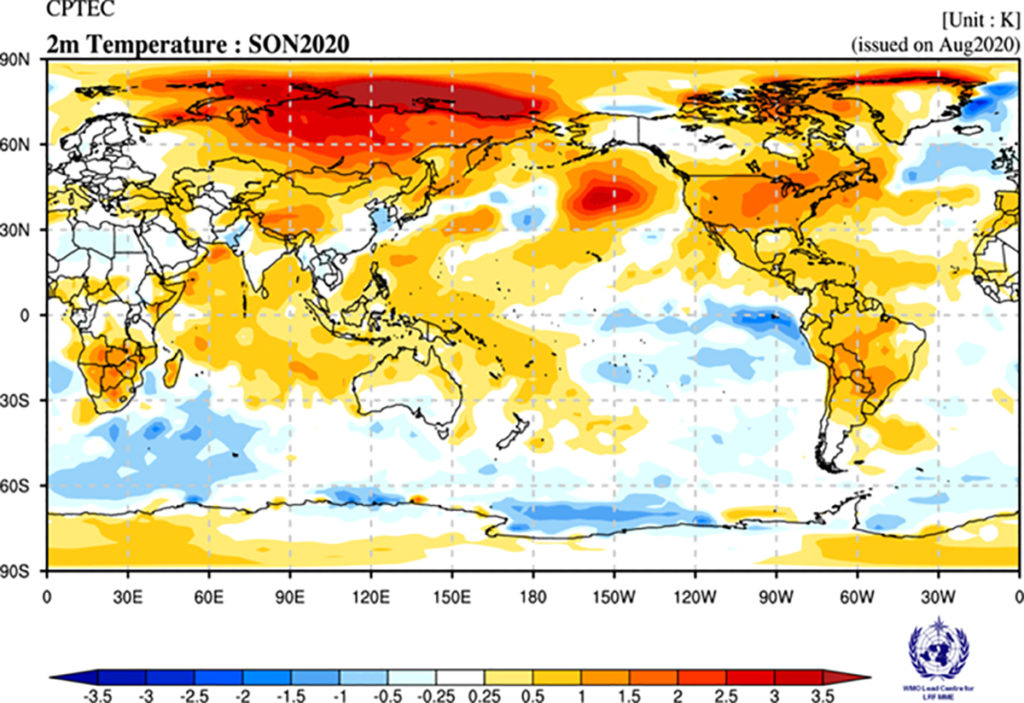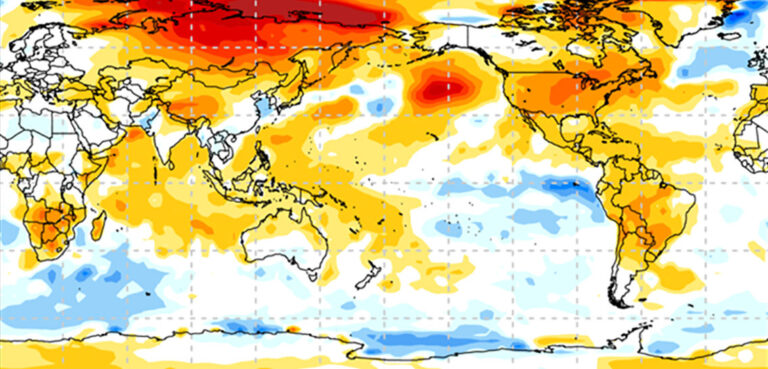According to the latest predictions from the WMO, there is a 60% chance of a weak La Niña event developing during September to November 2020. However, despite the tendency for La Niña to have a cooling effect on global temperatures overall, modeling suggests that above-average temperatures are expected to be predominant.
“Even if a La Niña event does develop, its cooling signal will not be enough to counterbalance the impact of human-induced climate change,” said WMO secretary-general Prof. Petteri Taalas. “The year 2020 remains on track to be one of the warmest years on record, with much extreme weather ranging from scorching temperatures and wildfires to devastating floods and marine heatwaves,” he said. “This is largely the result of greenhouse gases rather than naturally occurring climate drivers.”
WMO said that its Global Seasonal Climate Update, which complements the El Niño/La Niña bulletins, indicates that sea surface temperatures for September to November 2020 overall are expected to be above average for much of the globe, and this will influence land surface temperatures.
Furthermore, the WMO expects that, taking into account La Niña and other influences on regional climates, for the September-November period the update also indicates elevated probabilities for below-normal seasonal rainfall in the Horn of Africa and Southern Africa, and across the western and southeast Pacific, as well as across central North America. Conversely, WMO predicts elevated probabilities of above-normal rainfall across South and Southeast Asia and parts of Australia.




